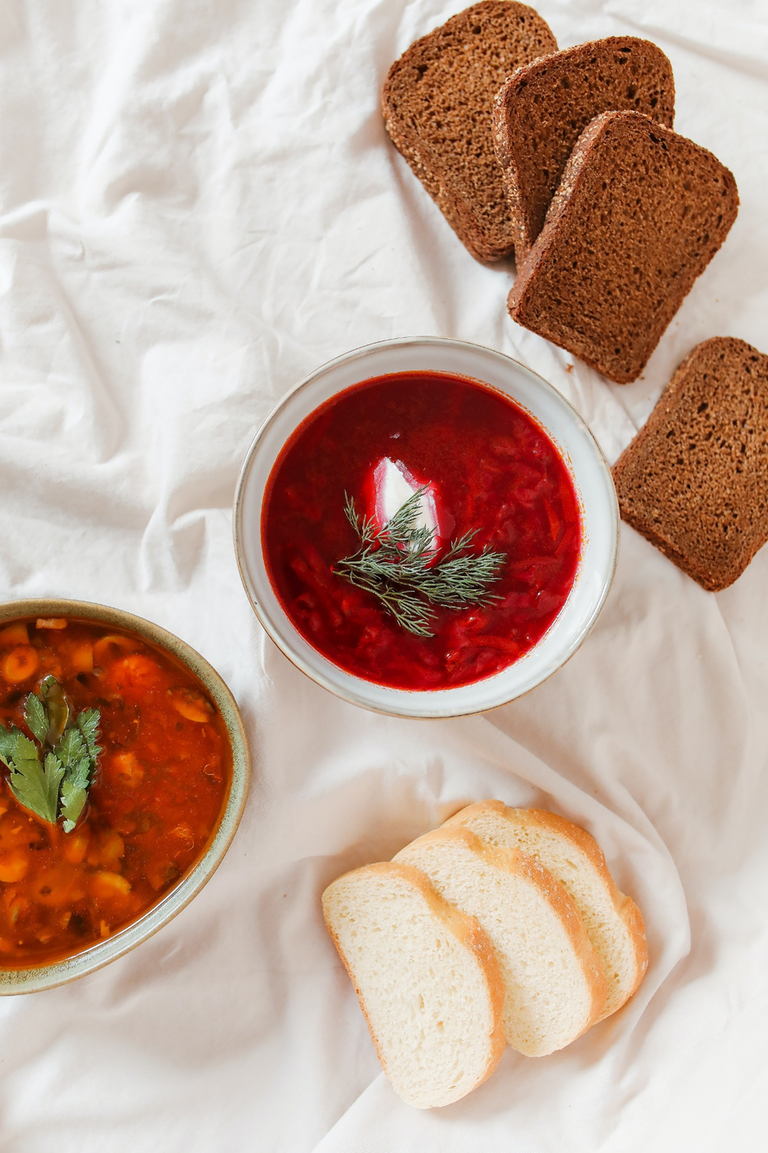[SPA?ENG] ¿Por qué en Ucrania se celebra la navidad el 7 de enero? Why in Ukraine do they celebrate Christmas on January 7?
Un post reciente sobre Navidad Kutia - Tradiciones Ucranianas de @nadin-zakrevska, donde celebraron recientemente noche buena (6 de enero 2022) y navidad (7 de enero 2022) me inspiro a desarrollar este post.
En esta ocasión aprenderemos sobre los calendarios Juliano y Gregoriano, además de una breve reseña sobre la comunidad ucraniana en Canada.
A recent post about Kutia Christmas - Ukrainian Traditions by @nadin-zakrevska, where they recently celebrated Christmas Eve (January 6, 2022) and Christmas (January 7, 2022) inspired me to develop this post.
This time we will learn about the Julian and Gregorian calendars, plus a brief overview of the Ukrainian community in Canada.
Calendarios Juliano y Gregoriano.
El calendario usado en el imperio romano era complejo y acumulaba muchos errores en comparación con el calendario astronómico o solar. Este último es el tiempo que toma la Tierra en dar una vuelta alrededor del sol y es igual a 365 días, 5 horas, 48 minutos y 46 segundos.
Para el siglo I AC en Roma, los errores ya acumulaban tres meses de desfase entre el año civil y el solar, por lo que Julio Cesar introdujo el uso del calendario solar y estableció el año regular de 365 días y 6 horas, y para que estas horas no se acumulasen introdujo un año bisiesto con 366 días cada cuatro años regulares.
El calendario Juliano significo una gran mejora con relación al calendario romano, pero para el siglo XVI la diferencia de 11 minutos y 14 segundos extras versus el calendario solar ya acumulaba un desfase de aproximadamente 10 días.
Julian and Gregorian Calendars.
The calendar used in the Roman Empire was complex and accumulated many errors compared to the astronomical or solar calendar. The latter is the time it takes the Earth to go around the sun and is equal to 365 days, 5 hours, 48 minutes, and 46 seconds.
By the 1st century BC in Rome, the errors already accumulated three months of lag between the civil and solar year, so Julius Caesar introduced the use of the solar calendar and established the common year of 365 days and 6 hours, and so that these hours did not accumulate he introduced a leap year with 366 days every four common years.
The Julian calendar meant a great improvement over the Roman calendar, but by the sixteenth century the difference of 11 minutes and 14 seconds extra versus the solar calendar already accumulated a gap of about 10 days.
Por decreto papal Gregorio XIII introdujo el calendario Gregoriano en 1582, y se estableció que el 4 de octubre de 1582 se convirtiese en el 15 de octubre de 1582, por lo que los días del 5 al 14 de octubre de 1582 no existieron en los países que adoptaron este calendario.
Con el tiempo la gran mayoría de los países aceptaron el calendario gregoriano, y en algunos países se sigue usando el calendario juliano para las festividades movibles religiosas. Es esta la razón de que, en Ucrania, donde la iglesia cristiana ortodoxa se rige por el calendario juliano, el 6 de enero 2022 fue nochebuena y celebraron Navidad el 7 de enero 2022. Algunos otros países donde se rigen por el calendario juliano para sus festividades religiosas son: Georgia, Rusia, Armenia, Serbia, Etiopia, Egipto, Bielorrusia y Macedonia.
By papal decree Gregory XIII introduced the Gregorian calendar in 1582, and it was established that October 4, 1582 became October 15, 1582, so that the days from October 5 to October 14, 1582 did not exist in the countries that adopted this calendar.
Eventually the great majority of countries accepted the Gregorian calendar, and in some countries the Julian calendar is still used for religious holidays. This is the reason why, in Ukraine, where the Orthodox Christian Church follows the Julian calendar, January 6, 2022 was Christmas Eve and they celebrated Christmas on January 7, 2022. Some other countries where they follow the Julian calendar for their religious holidays are Georgia, Russia, Armenia, Serbia, Ethiopia, Egypt, Belarus, and Macedonia.
Comunidad Ucraniana en Canada.
Según el censo canadiense del 2016, 1.36 millones de un total de 35 millones se consideran ucranianos, la gran mayoría nacidos en Canada.
Los primeros inmigrantes ucranianos llegaron al Canada en 1891, y fueron seguidos por miles a partir de ese año. La gran mayoría se asentaron en las provincias conocidas como las praderas: Manitoba, Saskatchewan y Alberta.
Ukrainian community in Canada.
According to the 2016 Canadian census, 1.36 million out of a total of 35 million are considered Ukrainians, the vast majority born in Canada.
The first Ukrainian immigrants arrived in Canada in 1891 and were followed by thousands from that year on. The vast majority settled in the provinces known as the Prairies: Manitoba, Saskatchewan, and Alberta.
Alrededor de Edmonton – Alberta, se encuentra La Villa de Herencia Cultural Ucraniana ubicada a aproximadamente 30 kilómetros al noreste de Edmonton en la autopista 16. Este es un museo al aire libre donde se usa la interpretación histórica, para representar la vida de los pioneros ucranianos de principios del siglo XX.
Según el website Alberta Travel, en la pequeña comunidad de Vegreville puedes conseguir el huevo de pascua – pysanka más grande del mundo.
Para saborear de comidas tipicas ucranianas alrededor de Edmonton hay disponibles algunos restaurantes donde degustar de las delicias de este país: sopa de remolacha (borscht), salchicha ucraniana (kobbassa), perogies y panquecas rellenas de requesón (nalynsky) entre otros.

Preparando perogies - making perogies
https://www.pexels.com/photo/a-red-soup-in-white-bowl-with-dried-leaves-and-cream-8601390/
Around Edmonton - Alberta, you can find The Ukrainian Cultural Heritage Village located approximately 30 kilometers northeast of Edmonton on Highway 16. This is an open-air museum where historical interpretation is used to depict the life of Ukrainian pioneers of the early 20th century.

Huevo de Pascua mas grande del mundo, segun Viaje Alberta - World Largest Eastern (Pysanka) according to Alberta Travel / https://pixabay.com/photos/world-s-largest-pysanka-egg-1231199/
According to the Alberta Travel website, in the small community of Vegreville you can get the world's largest Easter egg - pysanka.

Sopa de remolacha (borscht) - Borscht, beet soup.
https://www.pexels.com/photo/a-red-soup-in-white-bowl-with-dried-leaves-and-cream-8601390/
To savor typical Ukrainian food around Edmonton there are several restaurants where you can taste the delicacies of this country: beet soup (borscht), Ukrainian sausage (kobbassa), and pancakes stuffed with cottage cheese (nalynsky) among others.
Recursos:
Traducción – Translation: DeepL
Fuentes de informacion:
Censo Canadiense 2016 – Canadian Census 2016: www12.statcan.gc.ca
Biblioteca y Archivos Ucranianos Canada – Ukranian Library and Archives Canada:
www.bac-lac.gc.ca
Alberta Viaje - Alberta Travel: https://www.travelalberta.com/us/listings/vegreville-pysanka-5217/
Villa de Herencia Cultural Ucraniana – Ukranian Cultural Heritage Village
https://ukrainianvillage.ca/
Libro - Book: Cultura Clásica A/B Segundo Ciclo ESO – Clasic Culture A/B, por - by MaciasFotografias - Pictures: Pixabay, Pexels
Congratulations @gerardoruiz! You have completed the following achievement on the Hive blockchain and have been rewarded with new badge(s):
Your next target is to reach 100 upvotes.
You can view your badges on your board and compare yourself to others in the Ranking
If you no longer want to receive notifications, reply to this comment with the word
STOPCheck out the last post from @hivebuzz: